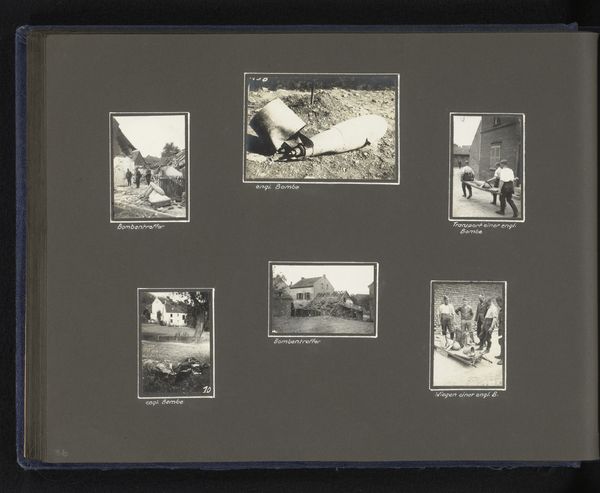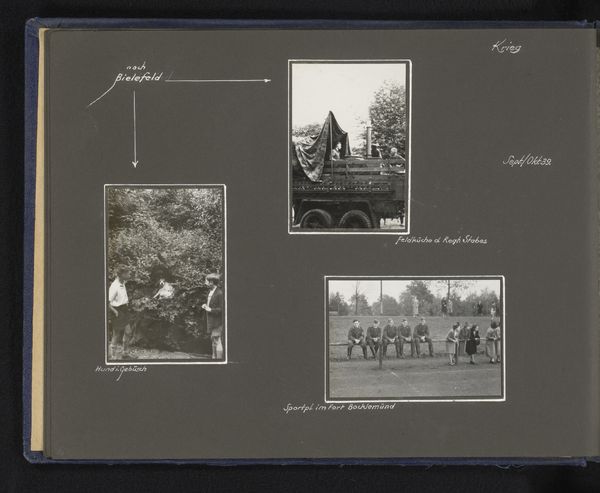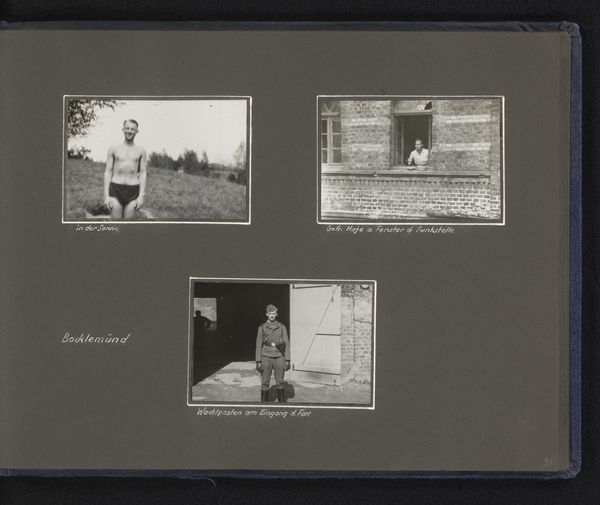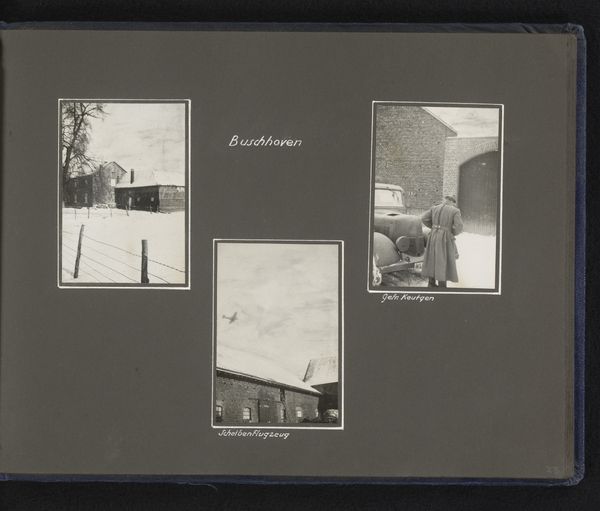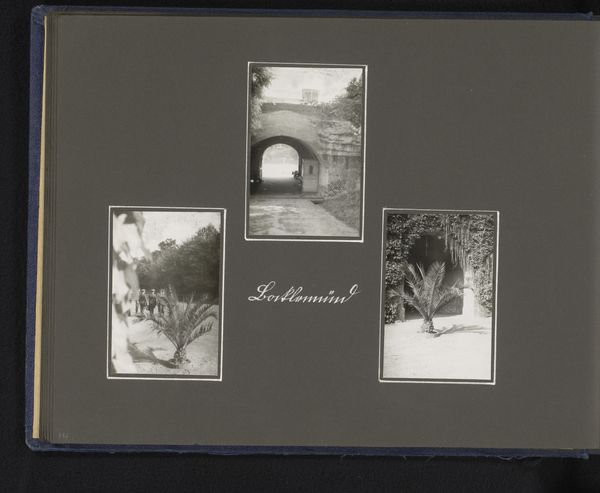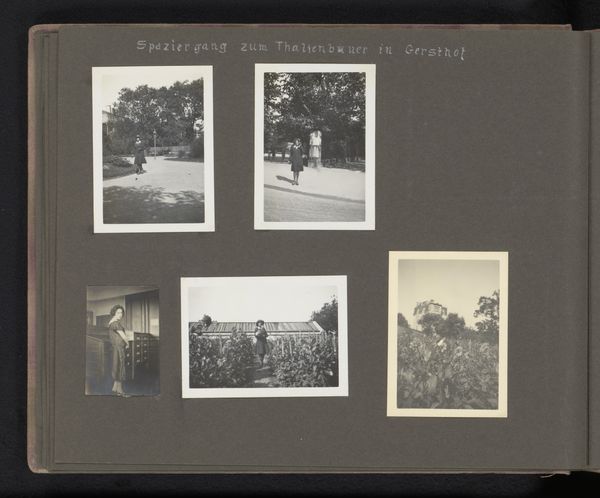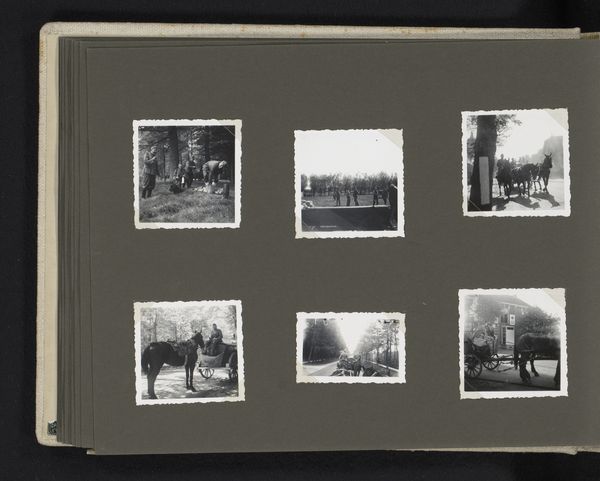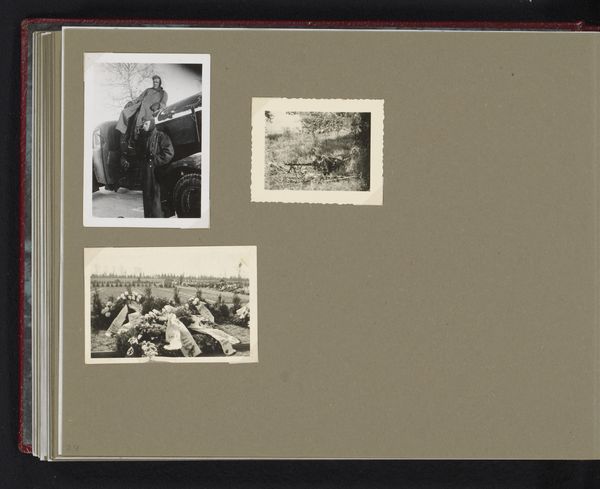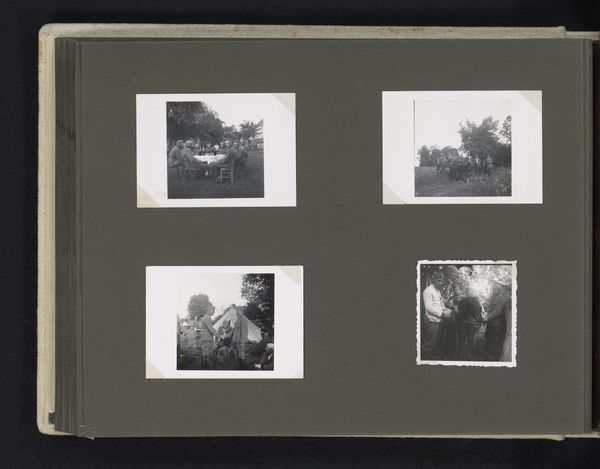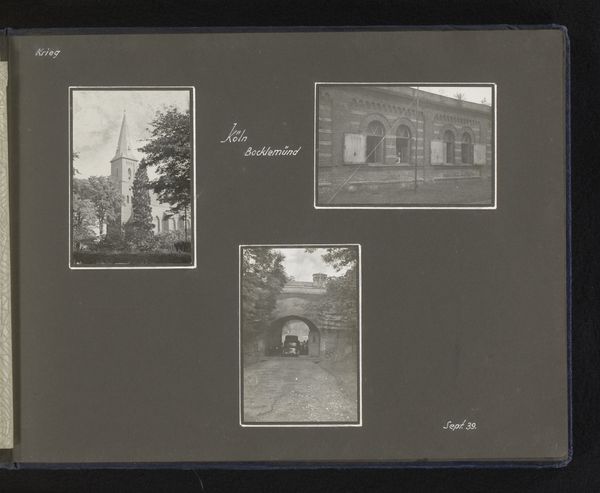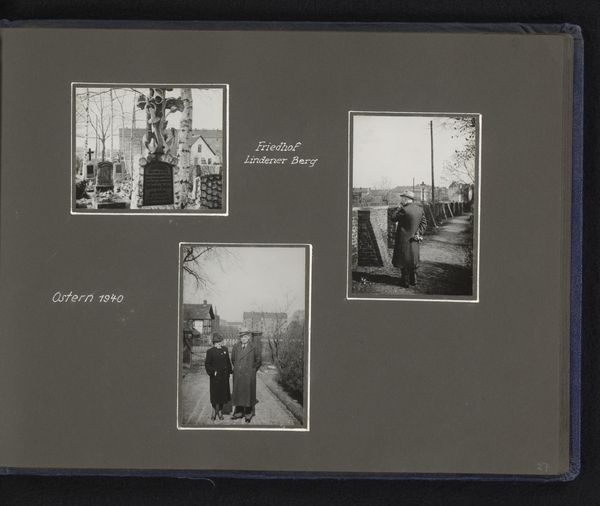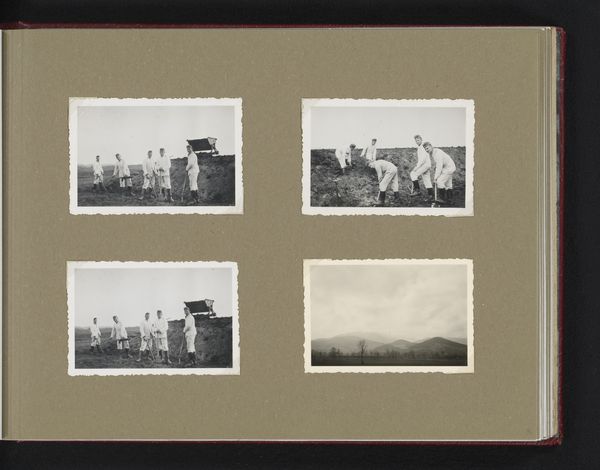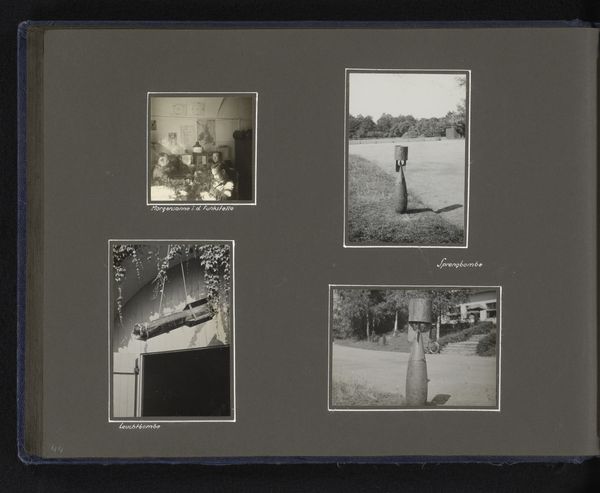
#
gray tone
#
muted colour palette
#
white palette
#
desaturated colour
#
unrealistic statue
#
disproportional
#
muted colour contrast
#
muted colour
#
repetition of grey colour
#
statue
Dimensions: height 90 mm, width 60 mm, height 220 mm, width 290 mm
Copyright: Rijks Museum: Open Domain
Curator: This striking photograph is titled "Fort Bocklemünd," dating from 1940 and held at the Rijksmuseum. It’s an unassuming black and white print that belies a deeper story. Editor: My immediate impression is bleak. It feels like looking at a collection of suppressed memories, framed in rigid shapes. It evokes isolation and coldness. Curator: Absolutely. Note the repetition of fortified towers. These are potent symbols, aren’t they? The watchtowers, the car with presumed commanders…It’s a tableau of power, of watching, of control, a stark visual record of war’s architecture, and likely its expansion into the daily life of regular citizens. The photos remind one of police file. Editor: The lack of colour also seems intentional, enforcing a certain emotional distance. The composition—the gray tones, muted palette, creates a sense of almost oppressive silence. Each scene looks cordoned off, cut from some bigger story. Even with the added photographs around, that silence still remains to fill it. Curator: You touch on something essential: the act of visual separation itself. Here’s a curated display, presented with its careful arrangements. A key theme for consideration here must be war and cultural loss. The images trigger what kind of responses to national identity and how images, seemingly straightforward, become charged symbols? It’s as if it’s documenting not just a place, but also a specific mentality. What is the psychological aspect of a visual inventory? Editor: I agree. Furthermore, I keep thinking of how history shapes image reception. A 2024 viewer perceives this work very differently, for example, from its 1940 contemporary, knowing as we do what historical and societal developments arose afterwards. In 1940 they have expectations from what these sorts of image compositions are but we instead now look at them through a political lens. Curator: Precisely, it invites contemplation of memory, trauma, the political undercurrents shaping these captured fragments. This photo reminds the value of image to those trying to change the meaning it withholds for them and using that symbol as a starting point of that journey. Editor: It really does underscore how much images communicate beyond their surface depiction, doesn’t it? And how profoundly historical context shapes the ongoing conversation surrounding art.
Comments
No comments
Be the first to comment and join the conversation on the ultimate creative platform.
